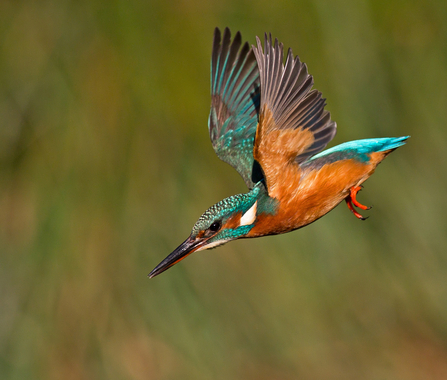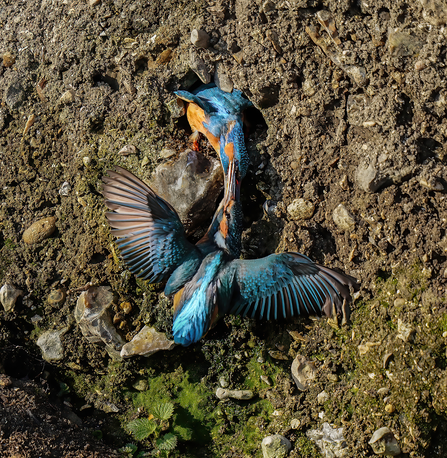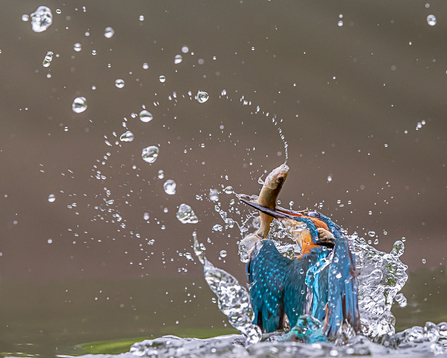Of the many birds that frequent our chalk streams, the brightly-plumed kingfisher is perhaps the most iconic. The species we have here in the UK is the Eurasian kingfisher – one of more than 100 such species worldwide, including Australia’s laughing kookaburra. Also called the "common kingfisher" or "river kingfisher", this dazzling bird makes for an unforgettable sighting.
Despite being resident on many of our chalk streams, the kingfisher often goes unseen. This is partly due to its swift flight; encounters typically consist of a vibrant streak whizzing away into the distance. But even when perched, its diminutive size (a mere 16cm long, on average) means you'll need sharp eyes to pick it out. Your best bet is to watch the water and listen for a series of short, high-pitched whistles - this could be a kingfisher about to take off, or one already on the move.
Amazingly, the kingfisher's best-known feature - its electric blue plumage - is an optical illusion. Those feathers are actually brown, but appear blue because of something called structural colouration. This is the same phenomenon that creates iridescent colours, like those of a peacock. However, instead of only being visible from certain angles, the kingfisher's blue hues are non-iridescent, and so look the same from every direction. It's literally a trick of the light!




